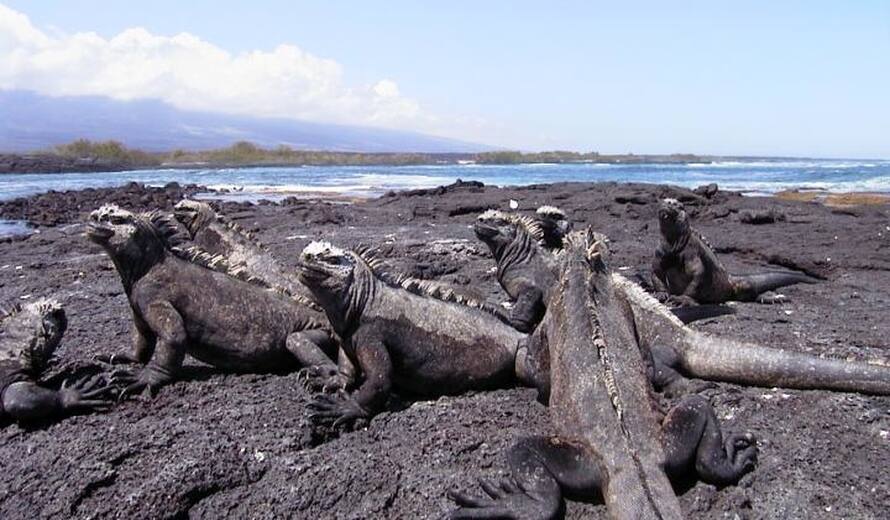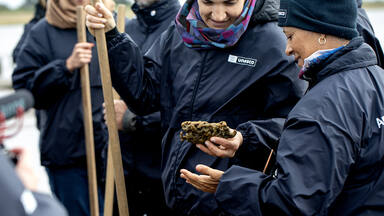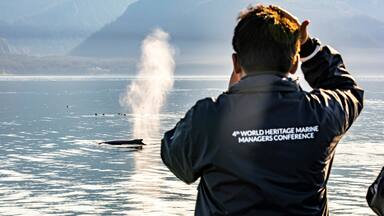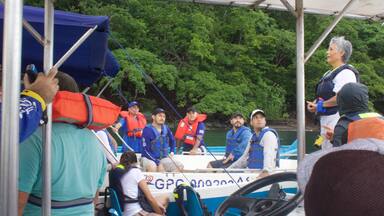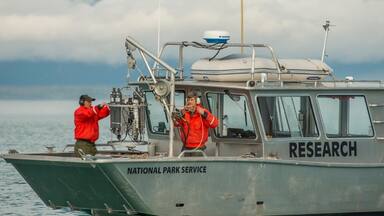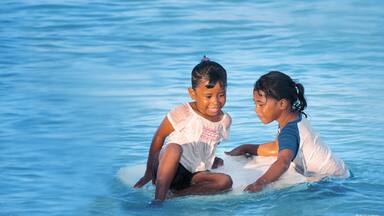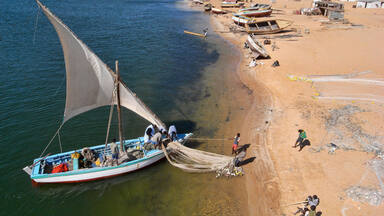Guardians of the world’s ocean icons convene in Galapagos to chart sustainable future
Paris, France – From 27-31 August 2016, managers from the 49 marine sites on UNESCO’s World Heritage List will convene in the Galapagos Islands to explore solutions to some of the world’s most pressing conservation challenges including climate adaptation strategies and market-based approaches to strengthen sustainable fisheries. Along with leading experts and ocean conservationists they will help chart a sustainable path forward for the world’s most iconic marine protected areas.
Since the first marine site was inscribed on the World Heritage List in 1982, the marine network has grown into a global collection of sites that stretches across topical, temperate and polar zones. Today, World Heritage marine sites comprise 10% by surface area of all the world’s marine protected areas, and include icons such as the Belize Barrier Reef Reserve System (Belize), Tubbataha Reefs Natural Park (Philippines), Phoenix Islands Protected Area (Kiribati), and Everglades National Park (USA). They are home to the breeding grounds of the world’s last healthy population of grey whales, the highest density of ancestral polar-bear dens, the world’s most ancient fish and the inimitable marine iguanas. These sites are among the places recognized by the international community for their outstanding beauty, exceptional biodiversity, or unique ecological, biological and geological processes, and selected through a rigorous, multi-year inscription process.
Like the rest of the ocean, World Heritage marine sites are facing unprecedented change. But they are also pioneering groundbreaking solutions, from remote surveillance systems that help prevent illegal fishing to community development and education programs that promote local stewardship. Site managers conferences help facilitate the exchange of best practices across this global community.
Since 2010, site managers have been gathering at global conferences every three years, first in Hawaii and later in Corsica in 2013. In between conferences, the World Heritage Centre helps to support collaboration among sites with biodiversity connectivity—like Wadden Sea (Germany/Netherlands/Denmark) and Banc d’Arguin National Park (Mauritania), which are both key migratory bird stopovers—or sites with shared challenges and opportunities—such as Glacier Bay (USA) and the West Norwegian Fjords (Norway), which are collaborating on sustainable tourism strategies for cruise ship traffic.
The triennial World Heritage marine site managers' conferences are an opportunity to discuss emerging challenges and solutions that can be replicated across this network and around the world. Keynote speakers at this year’s conference include Dr. Daniel Pauly of the University of British Columbia, Martin Visbeck of GEOMAR Helmholtz Center for Ocean Research, Paul Marshall from the University of Queensland, Lara Hansen from EcoAdapt, Enric Sala, National Geographic Explorer in Residence, Brian Sullivan from Google Oceans and Pulitzer prize winning journalist, Kenneth Weiss. The central themes of this year’s conference are climate change, sustainable fisheries, and collaboration.
The conference is held in partnership with the Gálapagos National Park and the Gálapagos Government Council and receives the leadership support of Lindblad Expeditions-National Geographic. Support was also provided by The Leona M. and Harry B. Helmsley Charitable Trust, the French Marine Protected Areas Agency, the Swiss manufacture Jaeger-LeCoultre, the government of Flanders, the Netherlands and Australia, the Great Barrier Reef Foundation, WWF, Conservation International and Galapagos Conservancy.
More information: https://whc.unesco.org/en/future-marine-world-heritage-2016
